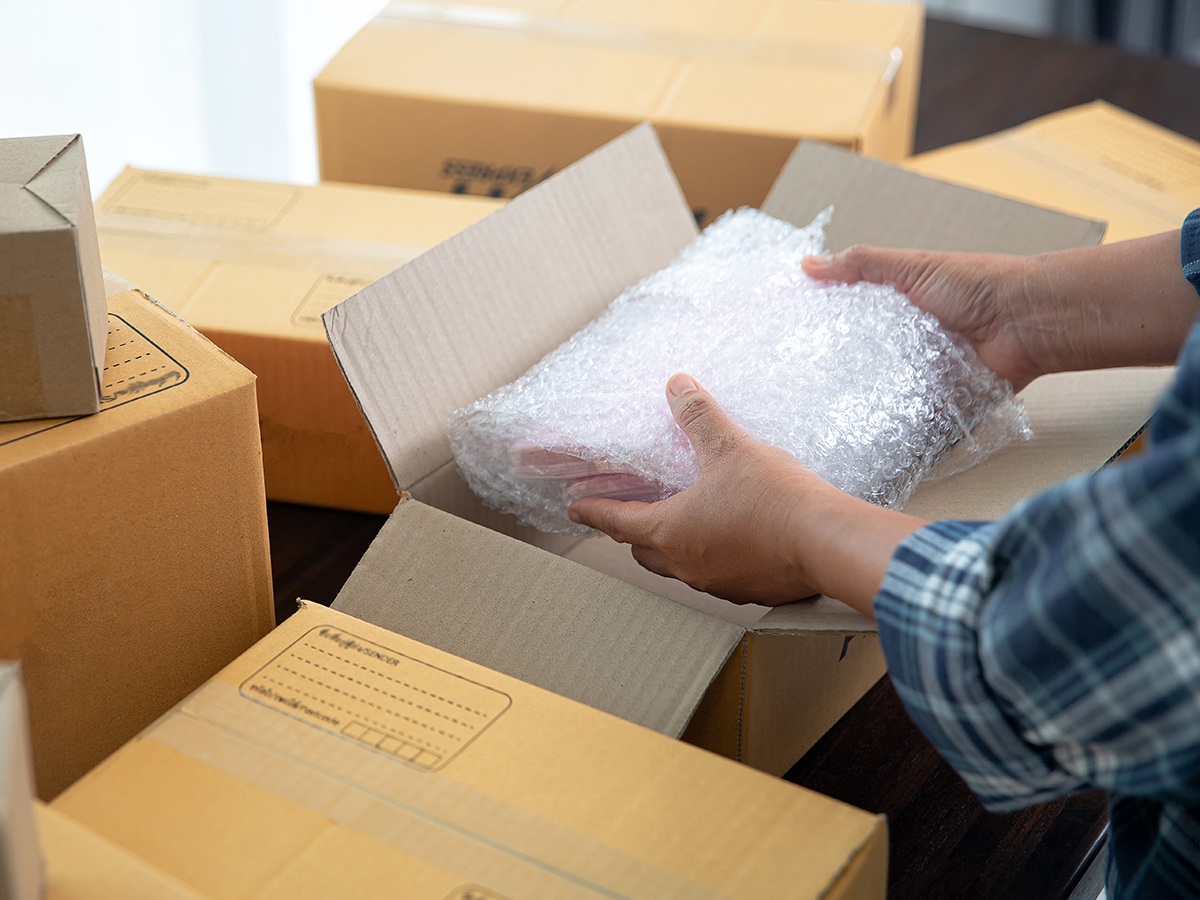
When you’re preparing for a move, packing is one of the most time-consuming tasks to factor into your schedule. Gathering all your belongings and boxing them all up can feel overwhelming, to say the least. Especially if you’re moving long distance, the job can feel even more stressful. Unable to take multiple trips between your old and new homes as you could during a local move, a long distance move requires you and your family to fully prepare in advance and be 100% ready to go when the moving truck arrives. With this daunting task ahead of you, how can you manage to make packing less challenging and more straightforward?
Packing Tips For a Long Distance Move
If you’re looking for help figuring out how to pack for a cross-country move, no worries – we have seven simple packing tips for moving to transform packing into a painless process from start to finish!
- Declutter lots
Before you even place a single item into a box, the first step can make packing ten times easier – decluttering. Figuring out what’s worth the effort of moving will truly alter your experience and allow you to cut down on significant amounts of time and energy. As you sort through your belongings, each item will go into one of four simple categories: donate, sell, trash, or keep. Because it can feel difficult to decide which items to rid yourself of, the best strategy is to start simple. Begin by sorting items that are easy to let go of – the things that you had honestly forgotten about in the back of a closet or stuffed into the depths of a drawer. These items, whether they’re in good enough shape to be passed along to someone else or not, are much easier to declutter because they don’t hold much use or meaning to you presently.
The more difficult items are the ones that you’re uncertain about (such as things that you like but are not sure if you like it enough to keep) and the ones that hold sentimental value. These belongings, should you choose to declutter them, may be better suited to rehoming in a more meaningful way, such as passing them along to loved ones or donating to a thrift store. This way, you can allow someone else to fully appreciate these items instead.
- Allow plenty of time
With so much going on in preparation for your move, it’s easy to let time get away from you and end up rushing to finish things up at the last minute. But in the case of packing, it’s best to stay on track and prioritize time management. The most ideal approach is to pack a little bit at a time to prevent the task from becoming overwhelming. Plus, with this method, you can complete the job in a more organized manner, allowing unpacking to become much easier. Try to set small goals each day to complete, instead of doing large chunks at once. It can take up to a week to pack a full house, so be sure to allow yourself the appropriate amount of time depending on how large your space is and how densely packed it is. It’s also important to consider some of the larger, more complicated items to pack, such as furniture and electronics, as those will require a bit more time and care.
- Get enough supplies
As you gather boxes and other supplies, make sure you accumulate ample amounts depending on how much you need to pack. Most importantly, it’s best to overestimate the number of boxes you’ll require, as we typically need more boxes than we think. Plus, you may need to spread out your items more than anticipated so the boxes don’t become too heavy to carry. It’s also best to acquire boxes of the same size for optimal stacking. This will allow you to fit more within your moving truck or your car. In addition to boxes, you should also stock up on:
-
-
- Packing tape
- Permanent markers
- Bubble wrap
- Packing paper
- Moving blankets
- Resealable bags
-
These supplies will allow you to pack most effectively.
- Stay organized
During the packing process, be sure to have an organizational system, and stick to it for the duration of the task. Experts recommend that you pack room-by-room, starting in one corner of your home and working methodically to the next. You won’t want to mix items from different rooms into the same boxes – this will only create confusion when it’s time to unpack. Instead, complete one room before moving onto the next, and make sure everything from these rooms remains separated. It’s best to start with a room that has the least used items so you don’t have any issues with packing it first.
While you move through the process, you’ll want to make sure you are thoroughly labeling your boxes in large letters on more than one side so you can quickly and easily find what you need. We recommend including the corresponding room and the group of items included inside the box. This can be as general as the category or as specific as the individual items themselves. You can also include a color coding system, which would entail attaching a colored piece of paper to the side of your box that corresponds with the room the box belongs in. This makes it easy for you or a moving crew to know where to unload your belongings.
- Disassemble what you can
If you’re moving large furniture items, it’s important to break them down as much as possible to create an easier packing experience. By disassembling these items, you will manage to make things lighter and less bulky for carrying. Just make sure to keep the different pieces together and properly labeled. Any small pieces such as screws should be held in resealable bags and placed in boxes with the larger pieces or taped to them.
- Reinforce & protect
The best way to pack for a long distance move is to be proactive in protecting your items from harm. This is most successfully completed by making sure things can’t shift in transit. Properly reinforcing your items requires using the space in your boxes as compactly as possible and filling any empty gaps with soft, protective materials where necessary. For fragile items, be sure to wrap them in bubble wrap, packing paper, or other soft items such as towels or blankets. Making use of soft household items is a great way to repurpose items you were already planning on packing in the first place while adding support where needed. Since your items will have a long journey, cushioning them is important to keeping them in the best condition possible.
- Keep an essentials bag
The last items you pack should be your essentials – the things you’ll need first at the new house or while in transit. These things should be kept in a separate bag that stays with you during the process. This will prevent you from rooting through boxes once you arrive in order to find items such as toiletries, towels, a change of clothes, and other necessary items. Try to think of everything you will need ahead of time.
Long distance moving made simple
Now that you’re prepared with our easy long distance moving steps, you’re set for success during your move! And if you’re seeking professional assistance to make your move even smoother, turn to Cord Moving and Storage Company. Dedicated to providing customers with the best service possible, Cord can offer premium moving services to you during your long distance relocation.


